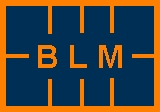
The patent protected Applicator (or "MTLD") was developed by BLM for the optimal positioning of the sensor FOTOS for the Fetal Transmission Pulse Oximetry.
Algorithms for the measurement and analysis of noisy biosignals
Techniques for Calibration of Pulse Oximeters at BLM
The Problem and Its Solution - an Introduction





